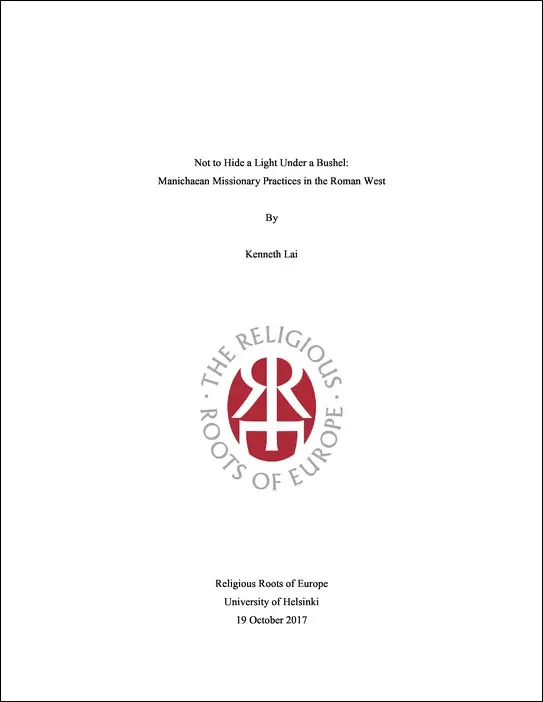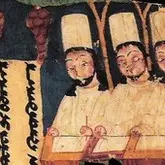
Not to Hide a Light Under a Bushel.
Manichaean Missionary Practices in the Roman West
Lai K.
Год :2017 Количество страниц :112 Язык :Английский Категория :Манихейство /Книги Скачать : PdfПоддержать :
Abstract
The details of the mission of Manichaeism—a religion that rose out of a Jewish-Christian milieu in Roman Babylonia in the 3rd century CE—emerge from both polemical sources and genuine Manichaean sources, the latter of which have been greatly expanded in the past century with a number of discoveries. This thesis presents a comparative study that critically evaluates the sources for and identifies the practices of the Manichaean mission in the Roman West between the 3rd century CE, when the religion was founded, and the 6th century CE, when the religion was persecuted off the face of the Western Roman Empire.
By comparing the corpus of Augustine (who was himself a Manichaean for 9 years) and Manichaean sources, the thesis identifies a total of eight Manichaean practices that can be tied to the Roman West: (1) the undertaking of polemical treatises and doctrinal debates; (2) the command of a broad range of languages; (3) exegesis of the New Testament to unearth Manichaean beliefs; (4) the comparison of Old and New Testament passages (= disputations) to demonstrate the falseness of the Old Testament, which no true Christian should believe in; (5) missions in the guise of merchant trade; (6) the appeal to similarities with the disciples of Jesus; (7) sensationalist appeals to the appearances of poverty and association with women; and (8) the donation of children by lay Manichaeans to become missionaries. Among those identified here, practices (6)–(8) seem to be unique contributions to the field; chapter 3 furthermore reconstructs the theological underpinning of practice (8). Previous scholarship has not focused specifically on a critical examination of the Manichaean mission.
In using a comparative method, this thesis compares attestation of Manichaean missionary practices internally (i.e., within, for instance, Augustine’s corpus to see if he is consistent in his attestation of the same practice) and externally (i.e., to see if polemical reports match up with genuine Manichaean reports). When making external comparisons, if attestation is found in Augustine but not in Manichaean sources, it is surmised that the practice is likely a heresiological invention; if in Manichaean but not in Augustinian sources, then perhaps a missionary practice that was not used or else simply not attested in the Roman West. The standard is generally, at any rate, to seek attestation in both sources and thus to verify that the practice was indeed used and witnessed in the Roman West.
Finally, the appendices present the first English translation of a recently discovered sermon by Augustine (Serm. 350F) and two tables compiling Manichaean disputations.





